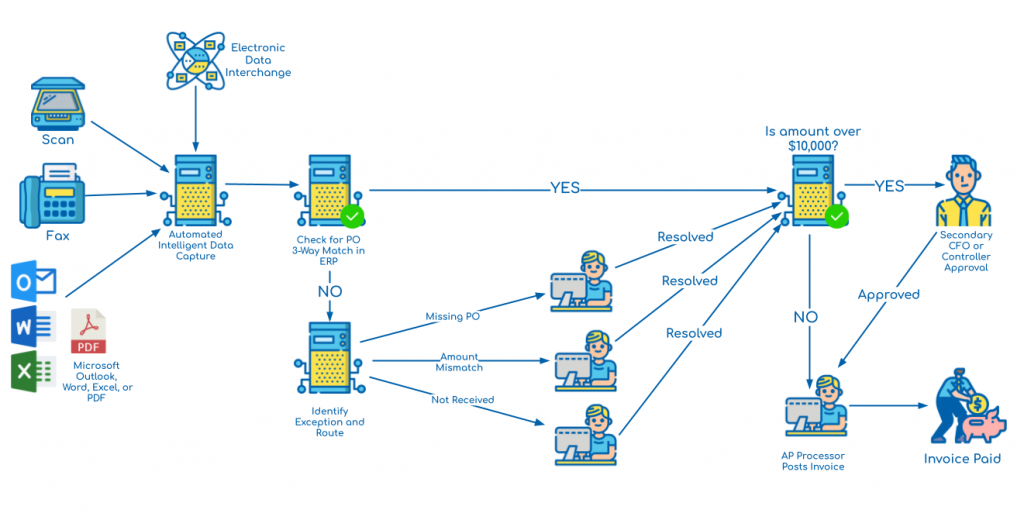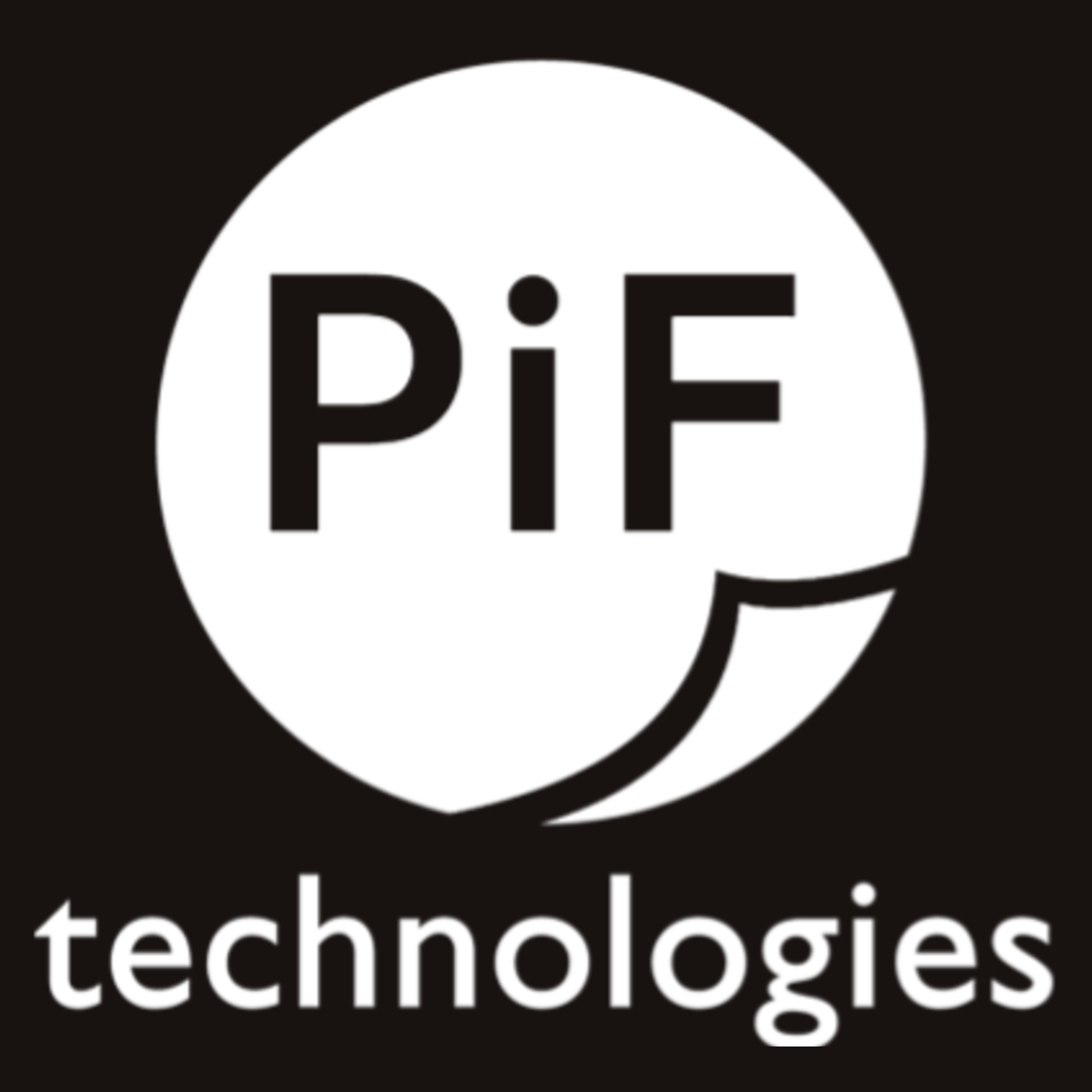The year 2020 is quickly fading into people’s rear view as the world goes back to normalcy and businesses are getting back to, well, business as usual. If the overarching theme of the year in 2020 was “disruption,” then the mindset for 2021 is certainly to spring back better than before. Organizations are already in the midst of doing this, by choosing to invest more in their employees, creating a more efficient and connected workplace, and by continuing to use processes and technologies that benefited their remote and changing organization.
As the state of the world changed, certain common business processes (like those within Accounting and Finance) did not. Many organizations had to have their AP clerks go into the office a few times a week to pick up mailed invoices, which they then would take home to manually enter into their financial systems.
Not only was this process time consuming, it was also frustrating for employees who would otherwise be working remotely. Once these invoices were received, they would often need to be reviewed and approved by other employees and executives in the department in order to process them. In order to do so, they would have to mail these documents or those same team members would need to go into the office just to review and approve them. This meant that for remote teams, an already long process would take even longer, with invoices taking weeks of time to process. According to the Institute of Financial Management (IOFM) Effectiveness Benchmark Report 2020, AP automation increased from 66% in 2019, to 73% in 2020. Many organizations quickly caught on to the necessity of automation, which allowed them to complete their processes with a partially (or entirely) remote team, while doing so more effectively and quickly.
We’ll further review what AP Automation is, how it can help organizations of any size, and discuss why 2021 is the right time to invest in this solution (and why it isn’t too late!)
What is AP Automation?
For those unfamiliar with the concept of AP Automation (aka Accounts Payable Automation), it refers to the technology used to streamline and automate Accounts Payable processes, removing manual tasks and providing better visibility and control over important financial data. AP Automation is a set of connected tools that work as one unified solution to simplify your organization’s processes.
There are core components that make up a successful AP Automation process:
Document Management
Document Management allows you to scan, file, and access your documents from one central system. It creates a fully paperless office and files can be accessed from anywhere, at any time, from any device.
Integration with your ERP
You likely already have an ERP that your organization relies on, so by implementing a solution that works WITH your ERP rather than separate from it, you create an even more streamlined process.
Artificial Intelligence/Robotic Process Automation
Artificial Intelligence (AI) “reads” the data from your invoices while Robotic Process Automation (RPA) enters it directly into your ERP.
Workflows
Building workflows can help you find the gaps within your process that need fixing, and allow you to fix them quickly without missing a beat.
These empower your organization to have a better, more effective, and more efficient AP process. Every organization will have a slightly different focus on each of these components, but they all come together with one end goal: to transform your AP Process.
Why Invest in AP Automation now?
A move towards digital systems
The IOFM’s survey indicated that 66% of invoices are being processed electronically. This number is only likely to increase as more and more organizations move towards digital processes, meaning that those completing these same processes with printed or mailed invoices will be massively behind their competitors. This can also cause strain between an organization and their vendors as invoices aren’t getting paid on time.
In 2021, a key focus for organizations should be a mass migration towards the adoption of a fully digital process. Though the urgency of needing a fully remote workforce has passed, the reality is that organizations still need to take advantage of a fully digital process to ensure they are best supporting their vendors, employees, and customers.
A focus on (accurate) data
Another lesson learned from 2020 was the importance of data. Organizations who experienced financial and organizational shifts needed to stay on top of their day-to-day operations and know exactly what was going on and when.
When organizations process invoices manually, they often don’t have the exact data on payments, due dates, and other important information readily available. This data gap not only is an inconvenience to financial leaders in the organization, but it can also place unnecessary strain on the organization when unable to properly plan for paying invoices.
By using a combination of Optical Character Recognition (OCR) which “reads” data from invoices, and Robotic Process Automation (RPA) which puts it directly into your system, you can ensure complete accuracy by eliminating the risks associated with manual data entry. With good, solid data, companies can work faster, more accurately, and make better business decisions.
A need to accommodate employees
Beyond financial strain on the organization, mental strain on employees should also be a consideration for organizational leadership. 2020 was a mentally taxing year, and employees around the world dealt with increased stress. AvidXchange conducted a survey of senior finance executives at more than 500 U.S. businesses that provided insight into how they were doing as a result of changes they faced due to COVID.
78% of respondents said new automation technology would help further reduce rising stress levels, and two-thirds (66%) said they have higher stress levels due to the impacts of the pandemic.
Acknowledgment of this stress among employees is necessary to ensure that they are productive without sacrificing their mental health. By investing in technology that can alleviate some of the common stressors your employees face, they can be happier and more successful in the long term.
AP Automation eliminates common frustrating tasks (like printing and filing), allowing employees to produce more meaningful work. They can also be redirected to other functions that better fit their skillset.
An increased need for collaboration
When employees needed to move to working from home, they needed to collaborate more than ever. While video conferencing and instant messaging software allowed employees to communicate, many organizations were still lacking in the ability to complete common processes and workflows digitally amongst employees or departments.
According to the AvidXchange survey, only 35% of organizations utilized fully integrated systems. This disconnect between systems is detrimental to organizations that had a fully or partially remote workforce.
What does an Automated process look like?
While every organization’s process is going to ultimately look different, a typical workflow will follow a similar structure. The graphic below illustrates how this process looks, from receiving the invoice all the way to paying it.

How to Implement AP Automation
As we mentioned before, AP Automation isn’t just a software you install and forget about. To create a fully automated process an organization needs to embrace a holistic change in process and attitude to ensure the success of their project.
PiF Technologies has implemented countless custom AP Automation projects for organizations of every size, industry, and ERP. Once we work with a customer, we identify their exact pain points and create a custom solution to best fit their needs. We work closely with them throughout installation and implementation to ensure their long-term success.
To get started with AP Automation, click the button below, fill out the form, and we’ll be in touch!








